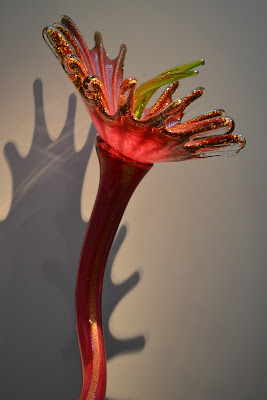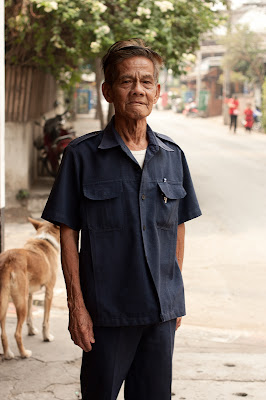This has to be one of the most surreal , and eerie, gallery
shows I’ve seen for a long time. David Cotterell’s “Monsters of the Id” show,
comprised of several large installation pieces, is completely interactive,
allowing viewers to survey the war in Hellman Province, Afghanistan, from
multiple perspectives. However, this is not depicted in it’s typical “war-torn”
state we are so used to seeing in the media. Instead, focus is placed more upon
ideas of surveillance & our relationship to our surroundings.
The first piece to be seen, near the entrance of the
gallery, is featured as a projection on a large curving wall. As viewers sit on
the bench placed in the centre, facing this wall, sensors recognise their
presence and create life-size figures that appear within the projection and
seem to stare out at them. The more people present in this room, the more
figures will appear.
This installation has the same affect on a later piece; a gallery-length model
of a desert landscape, again with a projection laid over the top of it. Here,
the projected image shows large groups of people from a birds-eye-view
perspective.
I found this piece to be the most thought-provoking, as it prompted ideas of
the insignificance of a human’s impact on a vast landscape. It also brought up
issues of constant surveillance & being watched – you can’t expect privacy
anywhere nowadays, not even in the middle of a desert!


Another section of the show featured a darkened room, lit by
a single lamp on a desk, set up as a supposed military base. A computer screen,
flashing with statistics, was also placed on the desk, across the room from a
tent made of camouflage fabric.
This piece, I felt, didn’t fit with the rest of the show, due to its immediate
lack of advanced technologies. However, after reviewing the exhibition as a
whole, I now feel this room was designed to
fully immerse the viewer, in yet another way; from observing on the
desert floor as figures pass you, to
hovering in a drone above the scene, this setting forces you to actually
become involved in the war scenario.
To conclude, as thought-provoking and enveloping as this
show was, I feel it was more a demonstration of these new interactive
technologies than anything else. The idea of war begins to get lost behind the
work’s complex delivery, which I think is somewhere unnecessary.
Saying this, Cotterell’s intention of making viewer’s question their sense of
presence was highly successful; we are either involved with or removed from the
scene, and can only have so much control over it. We apply this idea to our own
lives, and realise we sometimes have to strive to maintain our privacy.











































